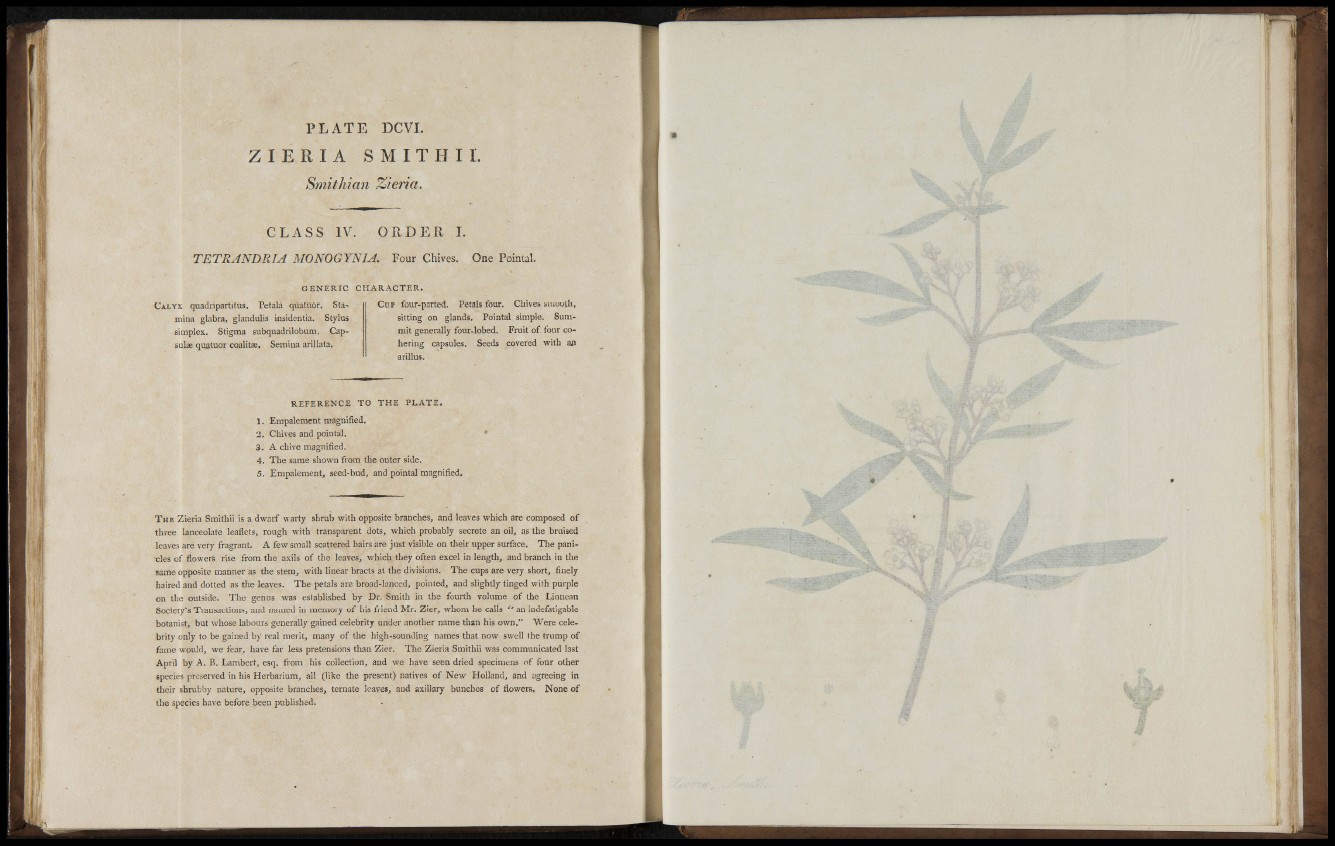
I:
i
PLATE DC VI.
Z I E R I A SMITHII.
Smithian Zieria.
t 'I---
CLASS IV. ORDER L
TETRANDRIA MONOGYNIA. Four Chives. One Pointal.
,'i •filili
fi
it
•i
f
GENERIC CHARACTER.
CALYX quadnpartilus. Petala quatuor. Stamina
glabra, glandulis insidentia. Stylus
simplex. Stigma subquadrilobum. Capfiulae
quatuor coalitae. Semina arillata.
CUP four-parted. Petals four. Chives smooth,
sitting on glands. Pointal simple. Summit
generally four-lobed. Fruit of four cohering
capsules. Seeds covered with ajt>
arillus.
REFERENCE TO THE PLATE,
1. Empalement magnified.
2. Chives and pointal.
3. A chive magnified.
4. The same shown from the outer side.
5. Empalement, seed-bud, and pointal magnified.
I
THE Zieria Smithii is a dwarf warty shrub with opposite branches, and leaves which are composed of
three lanceolate leaflets, rough with transparent dots, which probably secrete an oil, as the bruised
leaves are very fragrant. A few small scattered hairs are just visible on their upper surface. The panicles
of flowers rise from the axils of the leaves, which they often excel in length, and branch in the
same opposite manner as the stem, with linear bracts al the divisions. The cups are very short, finely
haired and dotted as the leaves. The petals are broad-lanced, pointed, and slightly tinged with purple
on the outside. The genus was established by Dr. Smith in the fourth volume of the Linnean
Society's Transactions, and named in memory of his friend Mr . Zier, whom he calls " an indefatigable
botanist, but whose labours generally gained celebrity under another name than his own." Were celebrity
only to be gained by real merit, many of the high-sounding names that now swell the trump of
fame would, we fear, liave far less pretensions than Zier. The Zieria Smithii was communicated last
April by A. B. Lambert, esq. from his collection, and we have seen dried specimens of four other
species preserved in his Herbarium, all (like the present) natives of New Holland, and agreeing in
their shrubby nature, opposite branches, ternate leaves, and axillary bunches of flowers. None of
the species have before been published.